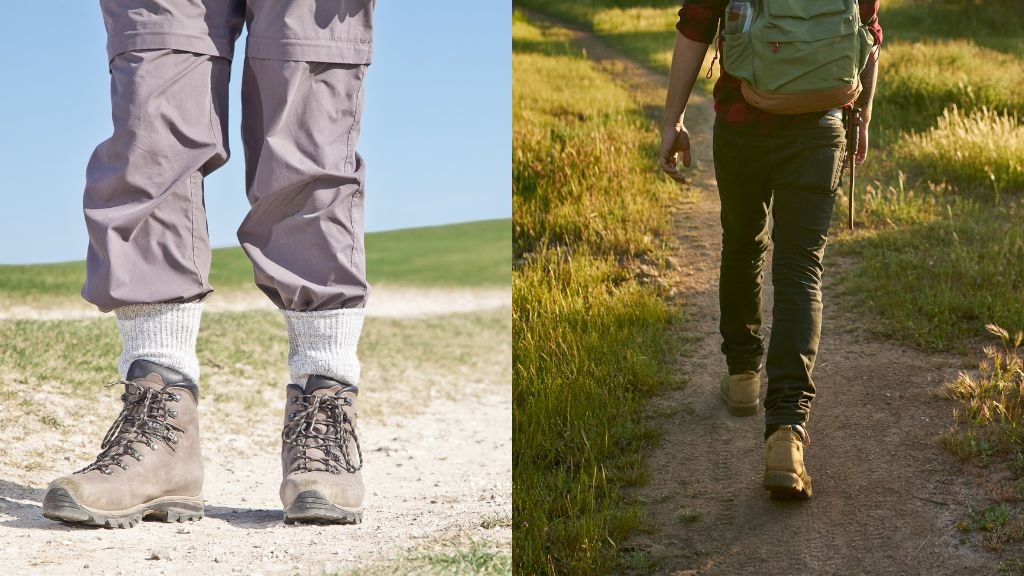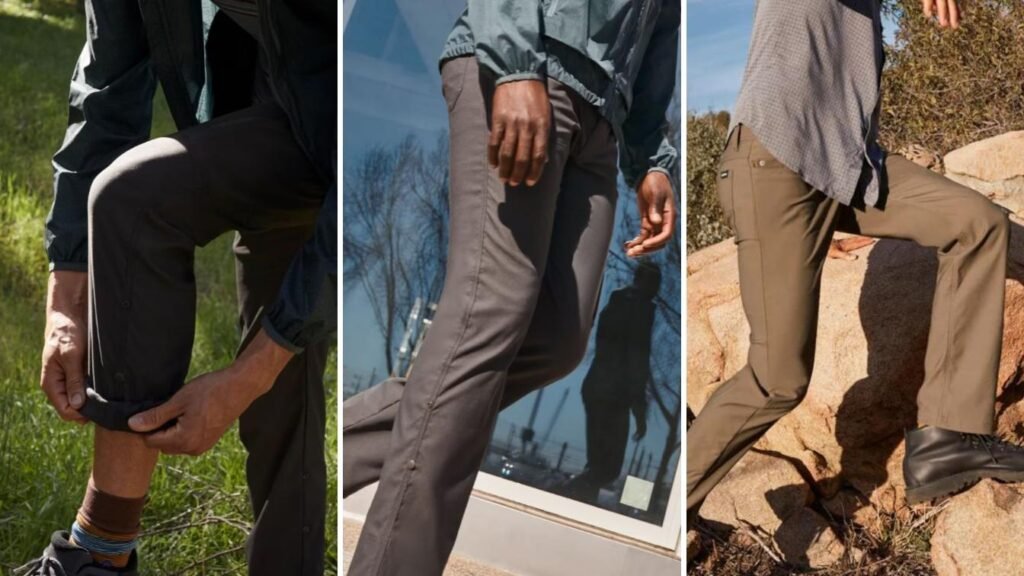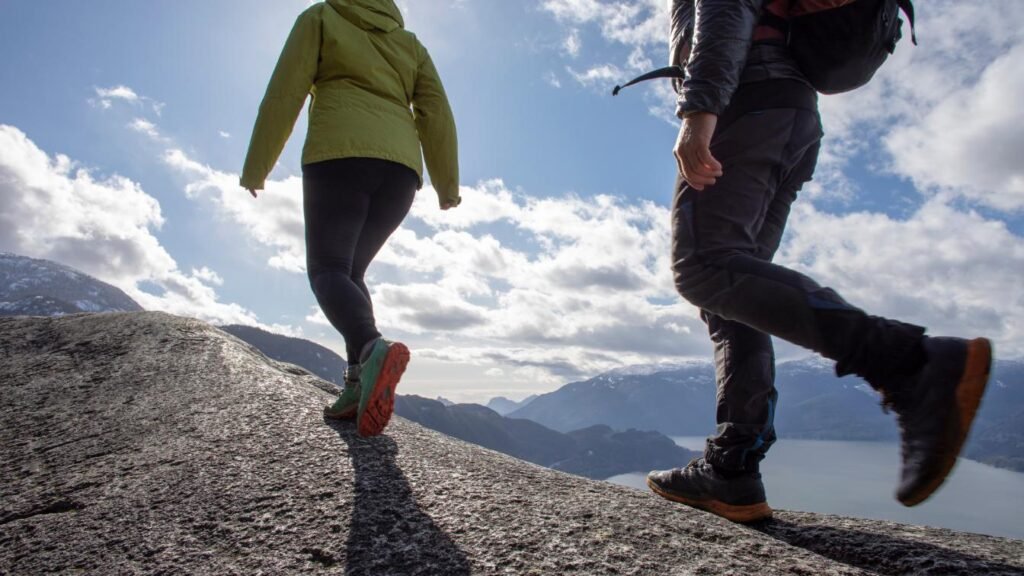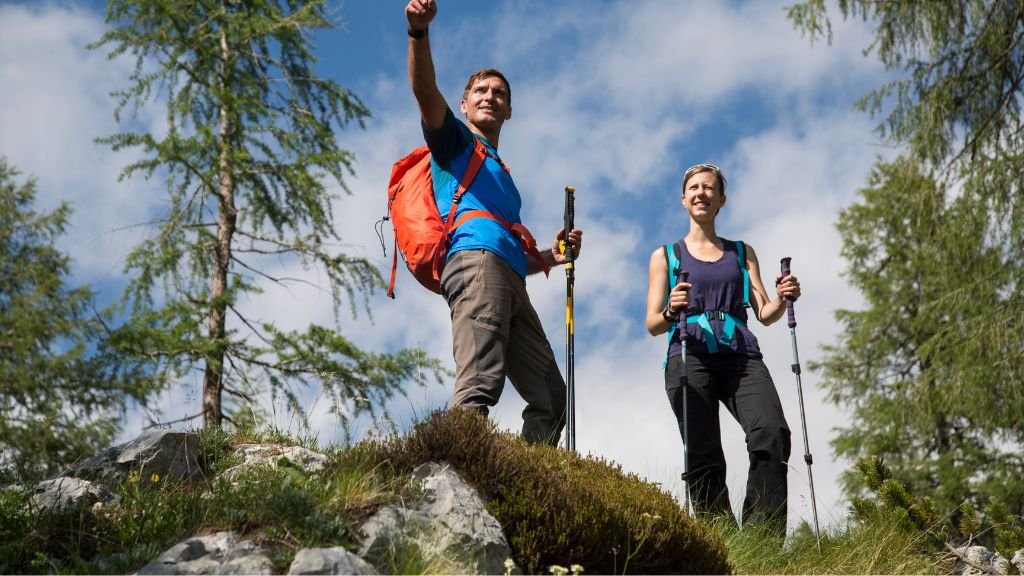You might not think much of it, but your hiking pants could be the silent culprit of your discomfort while hiking. They are either squeezing too tightly or flapping with the wind.
Let’s find that sweet spot where comfort meets function. We’ll explore why nailing the perfect fit isn’t just about looking good but is crucial for moving freely and enjoying every hike to the fullest.
Should Hiking Pants Be Loose or Tight? The Perfect Fit
The perfect pair of hiking pants should offer a balance between being form-fitting and allowing freedom of movement. They should not be too tight to restrict mobility nor too loose to become cumbersome.
Choosing the right fit for hiking pants is a personal decision, with some hikers opting for tighter fits and others preferring a looser style. When selecting hiking pants, always have in mind that movement is key as you need to be able to squat, climb, and step with ease on the trail.
Form-fitting pants that aren’t restrictive are generally your best option. This means the pants should contour to your body without squeezing too tightly, ensuring comfort and agility.
Key Features for Optimal Fit
Stretch and Mobility
When you’re looking for hiking pants that fit well, one of the first things to check is if the material stretches. Hiking pants that stretch give you the power to move freely.
Think of it like this: If your pants are made of stiff fabric, you might struggle to climb over a large rock or bend down comfortably. But if they stretch, you can reach, twist, and stride big without feeling held back.
You’ll often hear about features like gusseted crotches or articulated knees. These are fancy ways of saying the pants have extra fabric in the crotch area and are shaped around the knees. This extra room and shape mean you can step high and bend your knees without your pants pulling or pinching.
Adjustment Mechanisms
How your pants stay on your waist is also key. Some come with built-in belts, while others have drawstrings or Velcro tabs to pull the waist tighter or looser.
Why does this matter? Let’s imagine you’re on a long hike on the Appalachian Trail. As you walk, your body changes. You might want your pants to fit snugly in the morning but need a little more room after lunch.
With belts or drawstrings, you don’t have to stop and change your pants. Just a quick tug here or there, and you’re good to go. It’s all about making small changes to keep you comfortable hour after hour.
Ventilation Options
Hiking can get hot, especially if you’re powering up inclines in places like the sunny valleys of Zion National Park. Pants with zippered vents are a game-changer. Unzip a little to let cool air in, or zip up if it gets chilly or windy.
These vents let you control the temperature without changing clothes mid-hike. If a surprise heatwave hits as you’re trekking through the Grand Canyon, zip open those vents and get some relief. Or, if a cold wind picks up along the Pacific Crest Trail, zip them up and stay warm.
In short, hiking pants with the right features can make a huge difference in how much you enjoy your hike. Look for stretchy materials, adjustment options, and ventilation to find a pair that fits perfectly and keeps you comfortable no matter where your trail leads.
Trying On Hiking Pants: Best Practices
What to Wear
When you go to try on hiking pants, think about what you’ll wear on the actual hike. You should put on similar clothes when trying pants.
For example, if you plan to hike in cooler weather, wear the long underwear you’d have on under your hiking pants. This way, you can be sure the pants will fit just right with the extra layer.
If you’re going to wear a specific type of hiking sock, bring those too. They might make your legs a bit thicker around the ankles and calves, which could change how the bottom of the pants fit, especially if there are zippers or elastic cuffs.
Movement Tests
Now, for the fun part. When you’re wearing the hiking pants, don’t just stand there. Move around! Here are some moves you can do:
- Squat down like you’re sitting on a log.
- Step up onto a bench or a step to mimic walking uphill.
- Sit down on a chair to see if the waist pinches.
- Walk around the store. Do a couple laps if you can.
You’re trying to make sure nothing pulls, squeezes, or stops you from moving as you want. Pants that pass this test will likely keep you comfy on hikes anywhere from the local park to the Grand Tetons.
Care and Maintenance for Ideal Fit Longevity
Washing and Drying Tips
You’ve found the perfect pair of hiking pants. Great! Now, let’s make sure they stay just right. Keeping them clean and in good shape means you can enjoy them hike after hike. Here’s how:
- Read the Tag: The tag inside your pants tells you how to wash them. Follow it every time.
- Turn Them Inside Out: This helps colors stay bright and reduces pilling.
- Use Cool Water: Wash your pants in cool water. Hot water can mess with the fit and color.
- Gentle Detergent: Use a mild detergent. Strong cleaners can harm the fabric.
- Zip Them Up: Close all zippers and Velcro. They can catch on other clothes and cause damage.
- Avoid Fabric Softener: It can ruin water-resistant coatings.
- Air Dry if You Can: Lay your pants flat or hang them up to dry outside. Sunshine gets rid of smells naturally.
- Dryer Tips: If you must use a dryer, pick a low heat setting. High heat can shrink or warp your pants.
By washing your pants right, you keep them fitting well and doing their job on the trail.
Storage Advice
How you put your hiking pants away matters as much as how you wash them. Keep these tips in mind:
- Keep Them Dry: Always store your pants completely dry to prevent mold or mildew.
- Hang or Fold: You can hang your pants by the waistband or fold them neatly. Avoid cramming them into tight spaces.
- Cool, Dark Place: Store your pants in a place that’s cool and out of direct sunlight to protect the material and color.
- Avoid Plastic Bags: Don’t keep your pants in plastic bags. Cloth bags are better because they let air in and out.
Taking care of your hiking pants isn’t complicated. Wash them gently, dry them with care, and store them right. When you pull your pants on for your next adventure, they’ll feel just as good as the first time.
Conclusion
When you look for the right pair of hiking pants, you want them to feel like a second skin. They should move with you and not get in your way.
Take your time to try different sizes and styles until you find the perfect match!

Lukas Heller
Hey there! I’m Lukas, co-founder of BigfootHiking.com, alongside my adventurous wife Martha. Originally from Germany, I landed in Phoenix, Arizona, in 2015, where I’ve been scouting out new trails ever since (though they’re getting scarce!). By day, I’m a software developer, but my heart belongs to hiking – I’m always plotting our next trip. When I’m not coding or on the trails, you’ll find me hanging out with our Pit Bull, Zeus.





